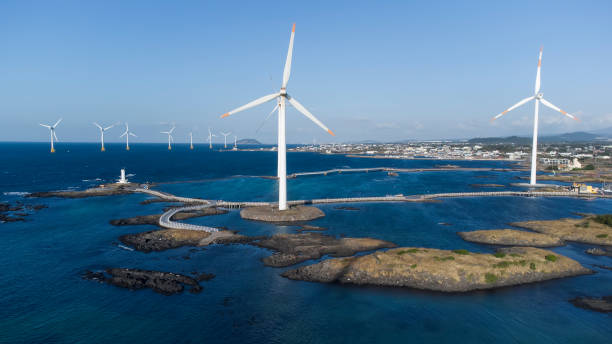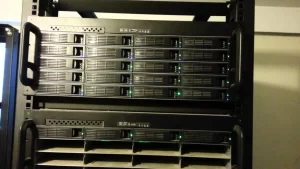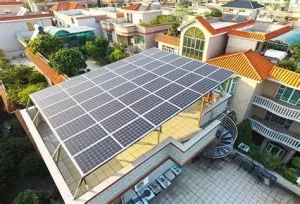Island Renewable Integration: Pathways to Sustainability
Islands, with their unique geographical and environmental characteristics, face specific challenges and opportunities when it comes to achieving sustainability through renewable energy integration. This integration is not only crucial for meeting the energy demands of island communities but also for preserving the delicate ecosystems and promoting long-term economic development.
One of the primary drivers for island renewable integration is the need to reduce reliance on imported fossil fuels. Many islands have historically depended on costly and environmentally damaging fuel shipments for their energy needs. By integrating renewable sources such as solar, wind, and tidal power, islands can gain greater energy independence and stability. For instance, the small island of Samso in Denmark has successfully transitioned to 100% renewable energy through a combination of wind turbines and solar panels, reducing its reliance on external energy sources and significantly lowering energy costs.
Solar power presents a significant opportunity for island renewable integration. Islands typically receive abundant sunlight throughout the year, making solar photovoltaic (PV) systems a viable option. However, the intermittent nature of solar energy requires effective energy storage solutions to ensure a consistent power supply. Battery storage systems are increasingly being used to store excess solar energy generated during the day for use at night or during periods of low sunlight. The Hawaiian island of Kauai, for example, has implemented large-scale solar-plus-storage projects, reducing its reliance on diesel generators and improving the reliability of its power grid.

Wind energy is another valuable resource for many islands. Strong and consistent winds in some island locations make wind turbines an attractive option. Offshore wind farms can be developed to take advantage of stronger and more stable winds, while onshore turbines can be installed in suitable areas. The Orkney Islands in Scotland have harnessed wind power to a significant extent, with multiple wind farms contributing to the local energy mix and reducing carbon emissions.
Tidal and wave energy also hold potential for island renewable integration, especially for those located in areas with significant tidal ranges or strong ocean currents. These technologies are still in the early stages of development but offer the possibility of generating reliable and predictable power. For example, the island of Islay in Scotland is exploring the potential of tidal energy to meet its energy needs.
In addition to these individual renewable sources, a combination or hybridization of different technologies can enhance the reliability and efficiency of the energy system. Hybrid systems that combine solar, wind, and energy storage can provide a more stable and continuous power supply, reducing the impact of fluctuations in individual energy sources.
Effective grid management and infrastructure are essential for the successful integration of renewable energy on islands. Smart grids and advanced energy management systems can help balance supply and demand, optimize the use of renewable resources, and ensure the stability and reliability of the power grid. This may involve upgrading existing transmission and distribution networks, implementing demand response programs, and integrating advanced control systems.
The involvement and empowerment of local communities are crucial for the successful implementation of island renewable integration projects. Community-owned renewable energy projects can foster a sense of ownership and participation, leading to greater acceptance and support. Educational initiatives and public awareness campaigns can also help residents understand the benefits of renewable energy and encourage energy conservation.
However, there are challenges that need to be overcome. The initial investment costs for renewable energy infrastructure can be high, and financing options need to be explored. Regulatory and policy frameworks may need to be adapted to facilitate the development of renewable energy projects. Interconnection with larger grids in some cases can pose technical and economic hurdles.
Despite these challenges, the potential for achieving sustainability through island renewable integration is immense. Islands can serve as showcases for the successful implementation of renewable energy solutions, inspiring other regions to follow suit. The journey towards sustainability may not be straightforward, but with strategic planning, technological innovation, and community engagement, islands have the opportunity to lead the way in the transition to a clean and renewable energy future.
In conclusion, island renewable integration offers a viable pathway to sustainability. By leveraging their unique natural resources, implementing appropriate technologies and strategies, and fostering community support, islands can transform their energy systems, protect their environments, and create a more resilient and prosperous future for their residents.
Contact us
- Email:[email protected]
- Tel: +86 13651638099
- Address: 333 Fengcun Road, Fengxian District, Shanghai
Get A Quote Now!
Related product links are available directly
Site storage products:Site storage products 归档 – (energystoragecontainer.com)
Lithium Battery:Lithium Battery 归档 – (energystoragecontainer.com)
Read more

Unveiling Photovoltaic+Energy Storage: Four Major Application Scenarios Leading the Future of Energy
In this way, the energy landscape is evolving, and one of the most thrilling developments in renewables is the integration of photovoltaics energy storage.

From Theory to Practice: Four Methods for Estimating Photovoltaic Power Generation
Photovoltaic power generation has become an essential part of modern energy solutions, particularly in home solar systems and distributed power applications

Rack-Mounted Lithium Iron Batteries: Creating Efficient and Reliable Energy Storage Solutions
When it comes to modern energy solutions, rack-mounted lithium iron batteries are taking center stage in a variety of industries. Whether you’re powering data centers, stabilizing energy for households, or keeping critical systems online at 5G base stations, these batteries have become the unsung heroes of our electrified world.

Late Night Energy Saving Tips: How to Maximize Electricity Savings During Off-Peak Hours
With rising energy costs, homeowners are increasingly exploring innovative ways to save on their electricity bills. One effective approach is utilizing off-peak hours—times when electricity rates are significantly lower due to reduced demand.
